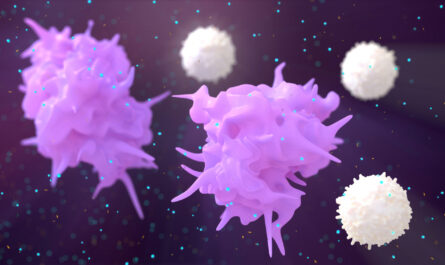
Introduction
Human Immunoglobulin (pH4) for Intravenous Injection, commonly known as IVIG, is a blood plasma derivative that is used to treat a variety of immune system disorders. It contains concentrated antibodies (immunoglobulins) derived from human blood plasma donations and is administered intravenously. IVIG provides protection against infections and is an invaluable treatment option for many patients. This article discusses the constituents of IVIG, its mechanisms of action, approved indications, dosage, administration, and side effects.
Constituents of IVIG
IVIG contains purified immunoglobulin G (IgG) antibodies extracted from pooled blood plasma donations. Plasma donations from thousands of screened donors worldwide are pooled together to ensure diversity in the IgG antibody repertoire contained in each batch of IVIG. IgG constitutes around 95% of the total immunoglobulin content of IVIG. It also contains small amounts of IgA and IgM antibodies. Each batch of IVIG undergoes rigorous quality control testing to ensure adequate concentration of IgG, low alkalinity (pH4), and absence of infectious agents like viruses. Important constituents of IVIG like IgG antibodies provide the therapeutic benefits of IVIG to patients.
Mechanisms of Action
IVIG exerts its therapeutic effects via multiple immunomodulatory mechanisms. It neutralizes toxins and microbial pathogens by blocking their attachment to host cells through specific antibodies. IVIG also modulates the immune system by inhibiting complement activation, blocking Fc receptors on leukocytes, and reducing levels of cytokines and chemokines that drive inflammation. These diverse immunomodulatory effects help IVIG treat conditions caused by antibody deficiencies as well as dampen autoimmune responses. While the exact mechanisms underlying IVIG’s therapeutic actions are still an active area of research, its ability to regulate the immune system lies at the heart of its efficacy in treating various immune disorders.
Approved Indications
Due to its broad immunomodulatory properties, IVIG is approved by the U.S. Food and Drug Administration (FDA) to treat numerous immune-mediated conditions. Some of the major indications approved by the FDA include:
Primary immunodeficiencies – IVIG replacement therapy for patients with antibody deficiencies, mainly agammaglobulinemia and common variable immunodeficiency.
Kawasaki disease – Adjunctive treatment to reduce the risk of coronary artery abnormalities in children with acute Kawasaki disease.
Chronic inflammatory demyelinating polyneuropathy (CIDP) – Initial treatment and maintenance therapy for CIDP to improve neuromuscular disabilities and symptoms.
Idiopathic thrombocytopenic purpura (ITP) – Acute treatment of ITP in adults with insufficient platelet counts.
Guillain-Barré syndrome – Initial treatment of GBS in combination with plasma exchange to hasten recovery.
Myasthenia gravis – Temporary treatment of myasthenia gravis exacerbations to improve muscle weakness and function.
IVIG is also commonly used off-label beyond FDA-approved indications for several other autoimmune and neurological disorders based on clinical evidence and practice guidelines. This wide range of approved and potential therapeutic uses underlines the significance and versatility of IVIG.
Dosage and Administration
IVIG dosage varies based on the condition being treated, severity of symptoms, and individual patient factors. It is most commonly administered at a dose of 0.4 to 2 grams per kg body weight. The total dose is infused intravenously in divided doses over 2-5 days for various conditions. Monthly or bi-weekly IVIG infusions may be required for long-term maintenance therapy. IVIG infusions must be given cautiously at recommended maximum rates to prevent fluid overload and associated side effects. Close monitoring during and after IVIG infusions allows timely detection and management of potential adverse events. Careful adherence to administration protocols is necessary to ensure patient safety and efficacy.
Side Effects and Safety Considerations
While generally well tolerated, IVIG infusions can cause mild to severe infusion-related side effects in some individuals. Common adverse effects include headache, fever, fatigue, nausea, vomiting, pain or rash at the infusion site. Rare but serious reactions like anaphylaxis, thromboembolic events, aseptic meningitis, and kidney injury may also occur. Certain patient-related factors such as rapid infusion rate, pre-existing comorbidities, and high doses of IVIG increase the risk of infusion-related reactions. Physical symptoms during or post-infusion should be addressed promptly. Premedication with antipyretics, antihistamines, corticosteroids and slowing infusion rates can help minimize side effects. Considering the above precautions and monitoring protocol, IVIG can be safely administered to derive its therapeutic advantages.
Conclusion
In summary, IVIG serves as a life-saving treatment modality for multiple immune-mediated conditions by virtue of its immunomodulatory pleiotropic mechanisms of action. With increasing clinical applications, it provides an important alternative treatment option, with reasonable safety when administered properly under supervision. Further research on optimizing IVIG regimens and elucidating the underlying molecular mechanisms will help maximize its efficacy. IVIG undoubtedly plays an indispensable role in immunology and its continued availability and Access should be ensured for patients in need.
*Note:
- Source: Coherent Market Insights, Public sources, Desk research
- We have leveraged AI tools to mine information and compile it


